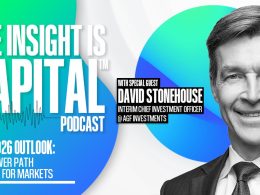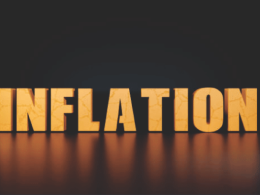by Dina Ting, CFA, Franklin Templeton Investments
Download the full paper for more on this topic. What follows is an excerpt.
With the interplay between the world’s geopolitical, economic and social issues and the complexities of the pandemic and its ongoing recovery, it can be difficult for investors to determine how to move forward. Here are three lenses to consider.
LENS 1: Pandemic Recovery: Back to the New Normal
The spread of COVID-19 has had a lasting impact on individuals, companies and countries alike. As signs of a recovery begin to emerge, such as the approval and early distribution of multiple vaccines, so will new challenges and opportunities. We expect that this will, once again, create dispersion in how quickly countries are able to go back to (the new) normal. Three such examples are outlined below.
Vaccine rollout. Globally, vaccine approvals are providing a much needed light at the end the tunnel, helping both consumers and business envision a return to normal. However, early vaccine rollout is testing each country’s ability to not only source, but effectively distribute and allocate among the population. It is apparent that not all countries will benefit equally as the logistical complexities and how well each country manages to vaccinate its citizens may create further dispersion in when/how each economy will recover. In some countries, this may include first having to convince the population of the benefits of vaccination. Among countries that have more buy-in, those with a more organised approach to the pandemic may also be the ones better positioned for the post-pandemic economic recovery. For example, Taiwan and South Korea have both been a model for handling the pandemic well through systematic and centralised approaches while demonstrating vigilance for continuous enhancements.
Economic impact: The post-pandemic recovery is expected to create a surge in the demand for both intermediate and end goods for consumers and businesses alike. Without proper planning, this can create shortages across certain industry segments and supply chains, such as raw materials, commodities, equipment, labour, etc. These shortages could potentially hold back the speed of economic recovery. For example, an increased demand for semiconductor chips from the consumer electronics and auto industries has created a shortage within the semiconductor chip industry.
Commodities: Extremely low interest rates could be with us for a while as governments around the world struggle from the debt burdens caused by the COVID-19 crisis. Central banks have reduced policy rates to record lows and many developed countries have negative rates far out in their yield curves. Maintaining low interest rates for an extended period could lead to inflation, which may lead to opportunities in commodities due to a potential shortage of materials and equipment to meet increasing demand.
LENS 2: Changing Geopolitical Landscape
As they say, the only constant in life is change. This holds true, especially when it comes to geopolitical issues. In the US, after unprecedented legal challenges following last year’s presidential election, the new administration is ushering in new policies in order to reshape the economy and improve foreign relations, especially in China where tensions have been running high due to friction over trade tariffs and technology. In Europe, we consider the four-year long Brexit saga and how it will impact UK trade policies across the continent. Moving further East, the new Asia-Pac trade agreement is paving the way for improved free trade among countries in that region.
Transfer of power in the United States: The start of President Joe Biden’s first term has been full of drama, not to mention several inherited issues that require quick attention, such as foreign and trade policies, climate issues and the pandemic. In an effort to jumpstart an ailing domestic economy, Biden recently signed a massive COVID-19 stimulus package. And before a worldwide audience, he declared that ‘America is back’, signaling his intent to restore the country’s moral and diplomatic leadership. In addition, the new administration signalled that it would reengage with international partners in an effort to repair and rebuild alliances. However, Biden might not necessarily ditch all of the prior administration’s ideas.
US China rivalry escalates: The fight for world dominance between the United States and China is escalating, and it will likely take a greater focus for the Biden administration to handle the strained relationship in the coming years. China has been steadily increasing its influence via supporting infrastructure developments in Asia and Africa, and more recently leveraging the pandemic as a way to assert leadership by helping out other countries with COVID-19 management and vaccine distribution. Southeast Asia has emerged as a key battleground for influence between the United States and China amid an increasingly heated rivalry that extends across geopolitics, commerce and technology.
ASIA-PAC trade agreement:1 On November 15, 2020, 15 countries in the Asia Pacific region signed the Regional Comprehensive Economic Partnership (RCEP), representing the largest trading bloc in the world, and one-third of the global output (US$26 trillion), or 30% of the world’s population. This pact includes the 10 Southeast Asian Nations as well as Japan, China, South Korea, Australia and New Zealand. RCEP was nine years in the making and signifies a geopolitical win for China, especially with the United States notably missing. It is also the first free trade agreement among China, Japan and South Korea, which together account for about 24% of the world’s economy and a combined yearly trading volume of over US$720 billion. Japan stands to benefit from its biggest trading partners China and South Korea as RCEP removes tariffs on approximately 90% of Japan’s export to these countries. The trade volume between the three countries could increase considerably as a result and support the case of shortening supply chain by making trades with countries that are geographically closer even easier.
LENS 3: Structural Change
Structural changes are shifts that are still in the early innings and have a more enduring impact on the economy. These could range from changes in consumer behaviours (more online, shifting spending allocation), business models (subscriptions, data center to cloud, streaming), to changes in policy allocation of resources or incentives. Below are several structural changes in today’s global economy that are driven by policy and investment as it relates to innovation and climate change.
Innovation:2 We live in a rapidly changing world and as we’ve witnessed amid the pandemic, it is becoming more important to not only solve known problems, but be able to anticipate future challenges. The capacity to innovate measures how a country can adapt and mobilise its resources to solve emerging problems and has become a key indicator of future success—it is a combination of capabilities, readiness and flexibility to adapt resources and infrastructure to remove bottlenecks and find solutions.
Climate change: Another structural change that should not be ignored is climate change, which is becoming ever more important for both short- and long-term investment horizons. The Earth’s climate is now changing faster than at any point in the history of modern civilisation. All around the world, we have seen more extreme weather and a greater frequency and magnitude of natural disasters. Each country’s policies and actions around climate change could be a source of differentiation in a country’s performance.
There are many things to consider when deciding where to invest among the constantly shifting, noisy markets. Disaggregating international exposure can help further refine risk and return objectives, while adding the flexibility to tailor allocations for specific outcomes. High return dispersion among countries and varying factors driving country performance make the case for the importance of country allocation, in our view, and single-country exchange-traded funds (ETFs) are cost-effective tools investors can use to gain precise exposure based on their convictions. Regardless of the lenses used to analyse and determine asset allocation, single-country ETFs empower investors to express views on what they consider may have the most material impact on returns.
Important Legal Information
This material is intended to be of general interest only and should not be construed as individual investment advice or a recommendation or solicitation to buy, sell or hold any security or to adopt any investment strategy. It does not constitute legal or tax advice. The views expressed are those of the investment manager and the comments, opinions and analyses are rendered as at publication date and may change without notice. The information provided in this material is not intended as a complete analysis of every material fact regarding any country, region or market. All investments involve risks, including possible loss of principal.
Data from third party sources may have been used in the preparation of this material and Franklin Templeton (“FT”) has not independently verified, validated or audited such data. FT accepts no liability whatsoever for any loss arising from use of this information and reliance upon the comments, opinions and analyses in the material is at the sole discretion of the user. Products, services and information may not be available in all jurisdictions and are offered outside the U.S. by other FT affiliates and/or their distributors as local laws and regulation permits. Please consult your own financial professional or Franklin Templeton institutional contact for further information on availability of products and services in your jurisdiction.
Issued in the U.S. by Franklin Templeton Distributors, Inc., One Franklin Parkway, San Mateo, California 94403-1906, (800) DIAL BEN/342-5236, franklintempleton.com—Franklin Templeton Distributors, Inc. is the principal distributor of Franklin Templeton U.S. registered products, which are not FDIC insured; may lose value; and are not bank guaranteed and are available only in jurisdictions where an offer or solicitation of such products is permitted under applicable laws and regulation.
What Are the Risks?
All investments involve risks, including possible loss of principal. The value of investments can go down as well as up, and investors may not get back the full amount invested. Generally, those offering potential for higher returns are accompanied by a higher degree of risk. Stock prices fluctuate, sometimes rapidly and dramatically, due to factors affecting individual companies, particular industries or sectors, or general market conditions. For actively managed ETFs, there is no guarantee that the manager’s investment decisions will produce the desired results. ETFs trade like stocks, fluctuate in market value and may trade above or below the ETF’s net asset value. Brokerage commissions and ETF expenses will reduce returns. ETF shares may be bought or sold throughout the day at their market price on the exchange on which they are listed. However, there can be no guarantee that an active trading market for ETF shares will be developed or maintained or that their listing will continue or remain unchanged. While the shares of ETFs are tradable on secondary markets, they may not readily trade in all market conditions and may trade at significant discounts in periods of market stress. Special risks are associated with foreign investing, including currency fluctuations, economic instability and political developments. Investments in developing markets, of which frontier markets are a subset, involve heightened risks related to the same factors, in addition to those associated with these markets’ smaller size, lesser liquidity and lack of established legal, political, business and social frameworks to support securities markets. Because these frameworks are typically even less developed in frontier markets, as well as various factors including the increased potential for extreme price volatility, illiquidity, trade barriers and exchange controls, the risks associated with developing markets are magnified in frontier markets.
__________________________
1. Source: The Straits Times, December 2019. ‘China, Japan, South Korea to push for RCEP signing in 2020’.
2. Source: Bloomberg, 3 February 2021. ‘South Korea Leads World in Innovation as U.S. Exits Top Ten’.
This post was first published at the official blog of Franklin Templeton Investments.















